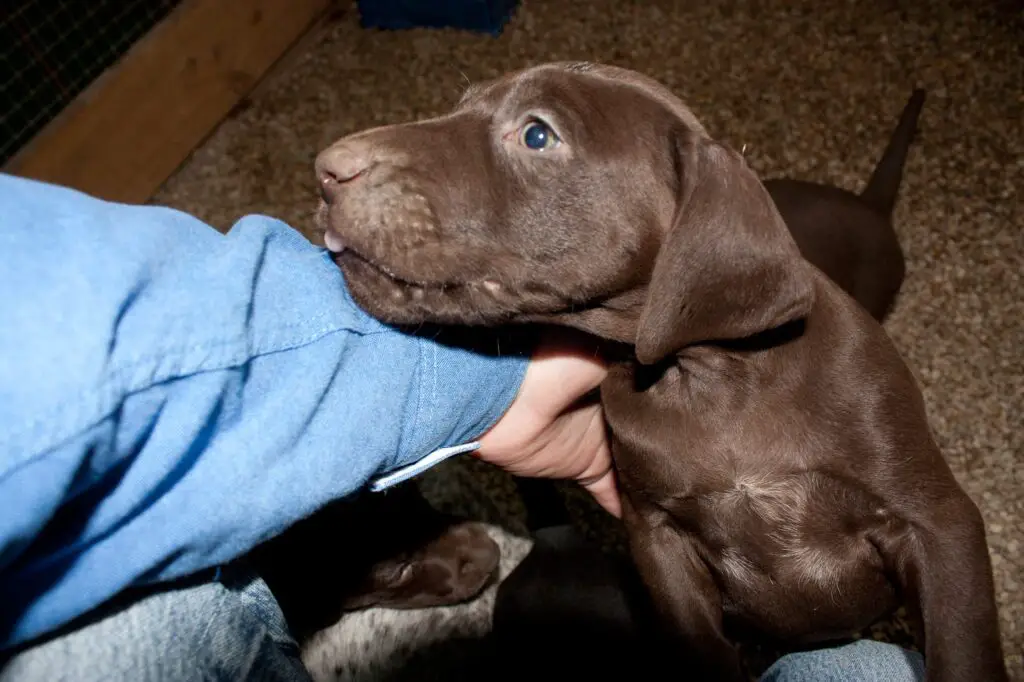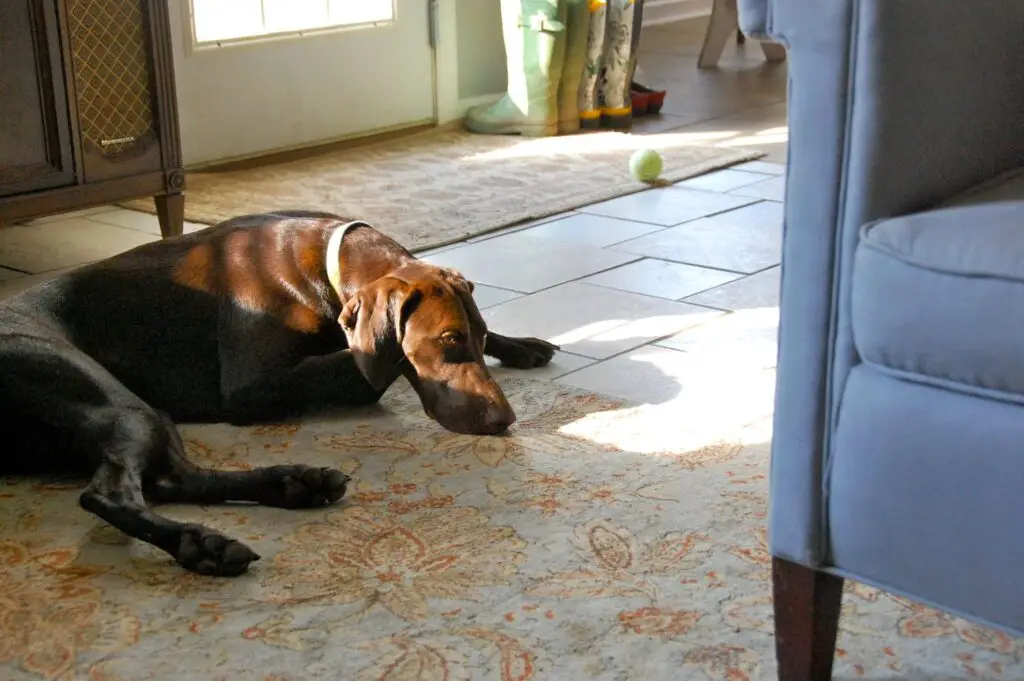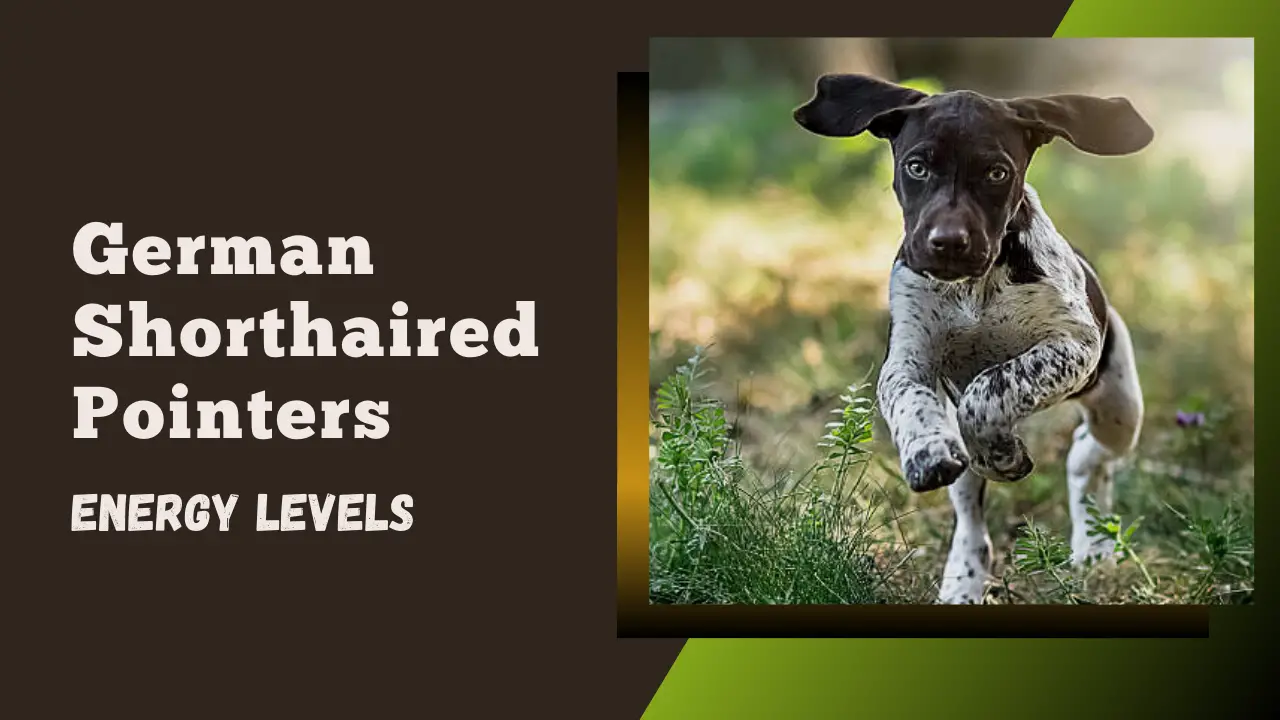Dogs, they say, are man’s best friends. For some, the saying holds. For others, the memory isn’t quite one of bliss.
Getting chased by a dog, barely escaping their snap, or constantly having to caution your dog doesn’t exactly score good points on the friendship scale. On the other hand, having one to always give you the company you desire, that provides the listening ear you crave when things are going south, or a dog you just vibe with makes an everlasting memory.
One factor that influences these experiences is their breed’s energy level. This article will discuss the energy levels of German Shorthaired Pointers (GSP for short).
Sit back as we dive deeper, exploring everything you should know!
Why Do German Shorthaired Pointers Have So Much Energy?
Perfected in the 1800s from a crossbreed of energetic dogs, German Shorthaired Pointers were bred with a vision for a versatile companionable gun dog that thrived both on land and water and was skilled at hunting, pointing (indicating the location of prey by freezing into position with body, nose, and tail aligned), and retrieving (HPR).

They are one of the most skillful dog breeds as they excel in field trials, agility, endurance, dock diving, flyball, and other sporting activities. They have had success in hunting prey like birds (mostly), rabbits, raccoons, squirrels, possums, and deer.
The United States Air Force and Transportation Security Administration even included them among the dog breeds they train in bomb detection.
At What Age Do GSPs Calm Down?
GSPs are boisterous between 3 months to 3 years of age, after which their boundless energy begins to decrease, albeit only a little.
What you need to do is redirect their hyperactivity to more positive outcomes that stimulate them physically and mentally.
So, if you find your GSP chewing at your shoe, you can redirect that energy to a chew toy. If it’s digging holes in the garden, you can redirect that energy to fetching or scent work and reward it with a treat.
Remember to avoid yelling at or spanking your pointer when it engages in unapproved behavior, as it can become stubborn and disobedient.
You should also pay attention to what you feed them. Since they are born hunters, feeding them with a working diet increases their hyperactivity, increasing their desire to engage in more activities.
How Much Physical Activity Do They Need?
German Shorthaired Pointers require intensive exercise to satisfy both their physical and mental demands.
If these needs aren’t met, they get frustrated and bored, releasing their pent-up emotions by trashing your furniture, using your footwear as chew toys, shredding your pillows, jumping in and out of the trash can, or other destructive activities.
The following tips will help them get the most out of each training session while keeping them in good health:
- Your German Shorthair’s exercise regime should consist of ample energy-intensive physical activity twice a day for 60 to 90 minutes each session.
While they are still puppies, keep their walks short (about 20 minutes a day) to prevent damaging their growth plates and joints from the shock absorption of walking across the hard ground. As they mature, you can adjust their walks and training accordingly.
- You should also prevent your puppy from jumping up and down heights (especially in the house) to prevent hairline fractures in its joints which can degenerate into serious problems as it grows.
- Socialization is a great way to exercise your puppy mentally without risking injury. Take it out to public places where it can meet new people and friends and teach it basic commands.
- One of the best ways to please German Shorthaired pointers is to mimic the work they were bred for during training. Starting your puppy on scent work early on achieves this and spurs its mental growth.
- If possible, let their activities take place in a vast terrain surrounded by nature on all sides, as that is their ideal environment.
- You should include many different activities in their exercise regime to avoid boring them because of their high level of intelligence.
- They love to please, so including rewards in their training challenges them to put in more effort and makes them extremely pleased.
- As a historically working dog, it loves to search and be on the hunt during training.
- As your dog gets to its twilight years, you should reduce their daily exercise once you start noticing stiffness after an exercise session. You want to prevent them from over-challenging themselves and developing joint problems.
Do They Make Great Family Dogs?
German Shorthaired Pointers make an affectionate canine companion for active families, providing ample exercises, training, and socialization to satisfy their energy drive.

They do best with hunters and people who love running, hiking, or cycling.
Even after meeting the above criteria, you should consider the personalities and temperament of the breeds involved in the mix as a prospective GSP owner.
The following are additional factors you should consider before getting a German Shorthaired Pointer as a pet:
1. Kids and Aged Relatives
GSPs like jumping, especially when they are younger, and they find it difficult to contain their bubbly attitude around new people or when their family gets home after a long day away.
This can be concerning for families with young children (typically under 7 years of age) or elderly individuals who might get knocked over.
2. Prey Drive
Like other hunting dog breeds, the German Shorthaired Pointer is a dog with a high prey drive, occasionally with lethal intentions. This can be a drawback for someone who currently has (or plans to get) cats, rabbits, or other smaller animals, especially birds.
They require consistent and attentive guidance from a young age to avoid chasing smaller creatures they would naturally see as prey.
If your GSP is descended from a hunting line, it will possess a much stronger prey drive and may occasionally succumb to it when it detects an intriguing smell. Therefore, off-lease exercises should be conducted cautiously and with adequate awareness of the environment.
3. Companionship
These dogs were also bred to be companions, having a strong desire to be with their owners. They are prone to separation anxiety, which can cause them to act out when their family is not home.
So, even if you are an active family, this dog won’t be ideal for you if you work long hours or are frequently not home, leaving the dog to its own devices.
This dog breed doesn’t adapt well to an environment where it’s expected to live outside full time, as this is a surefire way to frustrate it.
Final Thoughts
With German Shorthaired Pointers, the energy drive is nearly infinite, and there isn’t such a thing as too much exercise for them!
They are best suited for active owners who would do more than a game of fetch in the backyard, spend enough time socializing with them, and provide them with enough outlets to release their energy.
As a highly intelligent breed, they are easy to train and eager to please. So, redirecting their limitless energy shouldn’t pose much of a problem, especially when a treat is involved. A few considerations when getting a GSP include whether or not you are deciding to get a smaller pet in the future, the presence of kids and aged relatives, and access to a controlled terrain to manage their prey drive during exercises.
Overall, a German Shorthaired Pointer will be one of the best pets you’ll ever have if you are an active individual who enjoys company.


